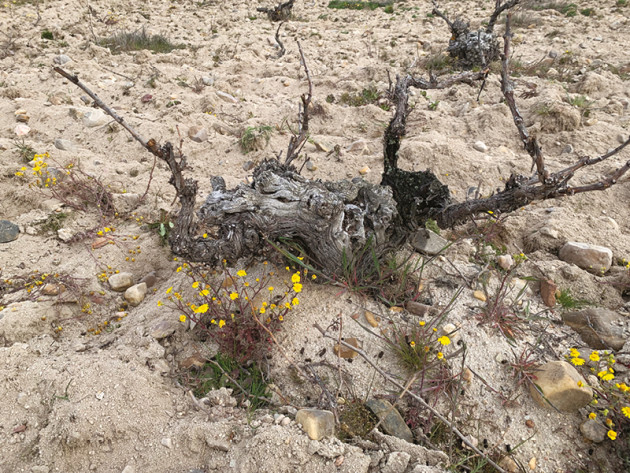
Revising Rueda
The launch of Gran Vino de Rueda is poised to raise the profile of Spain’s most prolific white DO, writes Andrew Catchpole.
With 10 June delivering World Verdejo Day, it’s an apt time to reassess Rueda, the pre-eminent Spanish white wine region and spiritual home to that grape.
Apt, because while Rueda has carved out a reputation for delivering fresh, aromatic, easy-going whites, it’s primarily done so – in the UK at least – with youthful expressions, sitting on shelves most often for under a tenner. Rueda’s collective producers, though, are pushing for change, not least with the recent official launch of Gran Vino de Rueda, designed to up the ante in terms of creating a recognisable higher-quality tier.
The basic requirements included under this quality label are vineyards of more than 30 years old, a maximum yield of 6,500kg/ha and a kilogram-to-litre conversion of 65%. Geography should provide much of the rest, with often old vine vineyards lying at 700-870m above sea level, delivering cool nights in the warm summers, keeping aromatics and acidity high.
In practice, what Gran Vino de Rueda has done in the preamble to its launch is put the focus more firmly on several less-well-aired facets of Rueda’s Verdejos, centred on texture and terroir and even ability to age.
A recent trip to the region brought this home, beginning with a visit to the Lurton-owned Campo Eliseo winery in La Sela village. The story here is very much of modern winemaking, with several lots fermented separately from four plots of vines, using gravity, cluster selection, wild yeasts, and fermentation in a medley of eggs, barrels and foudre, with some wines resting on lees for 12 months or more.
“We make wines in many different ways, to get the wines we want,” says Fernando Valenti, Eliseo’s commercial director. “Verdejo is a fantastic variety, it really has a lot of potential, it ages well with oak, so we are trying to express that.”
The oak-infused style was much in evidence across a flight of barrel-fermented and aged Verdejos shown as part of a wider Verdejo tasting at the local Consejo HQ. These ranged from wines such as Oro de Castilla Finca Los Hornos 2019, with subtle barrel notes from foudre, by way of a creamy Verdeal 500 Flores 2019 and a superb, juicy, ripe Pita Finca La Cantera 2018, retaining a clear imprint of Verdejo character, to the full-on, full-malo Meraldis 2018 in all its almost honeyed intensity.
That flight showed barrel-aged wines in their prime, from 2020 back to 2018, while elsewhere many unoaked or very lightly oaked Verdejos revealed depth and texture born of site, low cropping, lees work and the intensity of otherwise light-handed work in the cellar. Not all were up for Gran Vino status, although several did qualify or were works in progress, but the point was clearly made – Verdejo from Rueda can be and is a multi-faceted wine.
For Mariano de Juan Temiño, commercial director at Castelo de Medina, who showed the winery’s two Gran Vino wines – Castelo de Medina FB Verdejo 2020 and Prefeloxérico 2020 – alongside its more regular Verdejos, the variety “still has much to tell” the world.
“We hope by showing and promoting these wines that people will have greater recognition and understanding of the quality in Rueda, and get used to the idea that it’s not just about young wines, but serious quality wines too.”
Such wines have long existed in Rueda, albeit in a niche way, but it is hoped the Gran Vino designation will supercharge their profile and make such styles more commercially attractive for producers to make.
Christian Bungard, export director at Bornos, where the elevation of its first Gran Vinos de Rueda is underway, says the range of Verdejos, from the light and fresh Bornos entry-level wine, to richer, lees-aged La Caprichosa from old bush vines, “reflects that spectrum of notes found across Verdejo”.
What is certain is that the region has much more to offer than is currently widely recognised. A final visit, to Bodegas Shaya (part of the Gil Family Estates, HQ’d in Jumilla), finds winemaker Andres Monsalve presiding over plots of gnarled bush vines up to 120 years old, presumed to be “mostly Verdejo”, but with some small parcels of Sauvignon Blanc, lying at over 900m altitude.
These are really poor, sandy soils, littered with stones, and a very hands-off approach allows a minerally vibrancy to shine through the wines. “We have good grapes, so we don’t do much to them, the focus is on quality and letting them express themselves and the soils,” says Monsalve.
The wines are superb. And while Rueda is rightly proud of being Spain’s premier white wine-producing region, with its fresh, zesty styles of Verdejo to the fore, the likes of Bodega Shaya show the range of which this flagship variety is capable. It certainly has you hankering for more.






